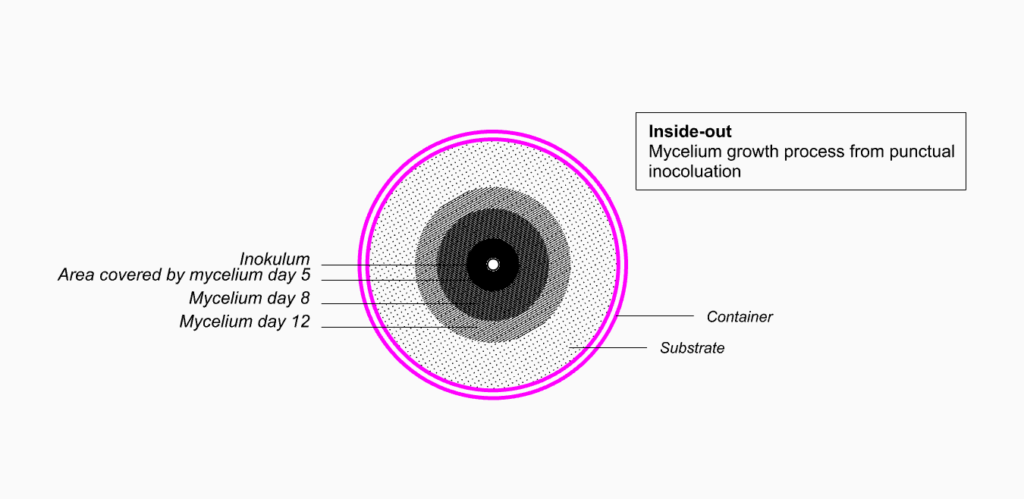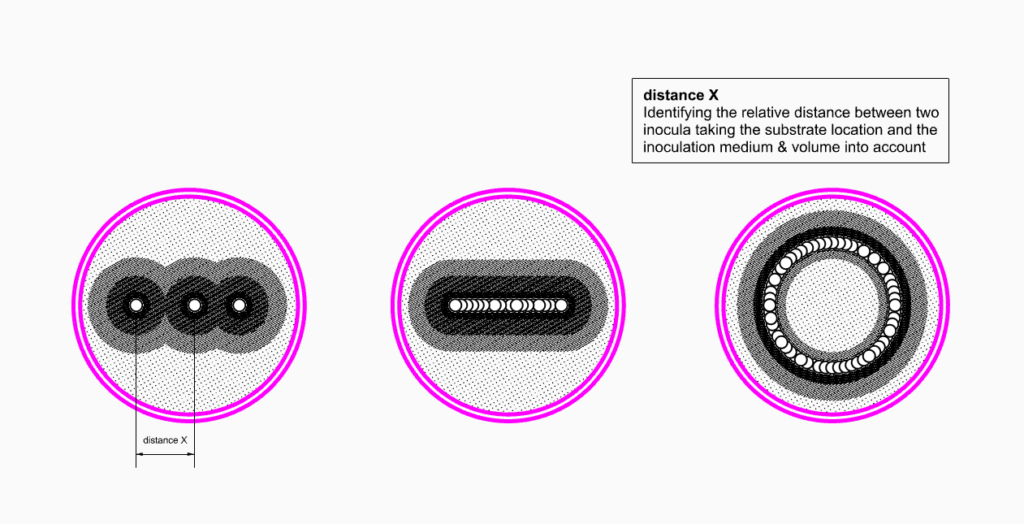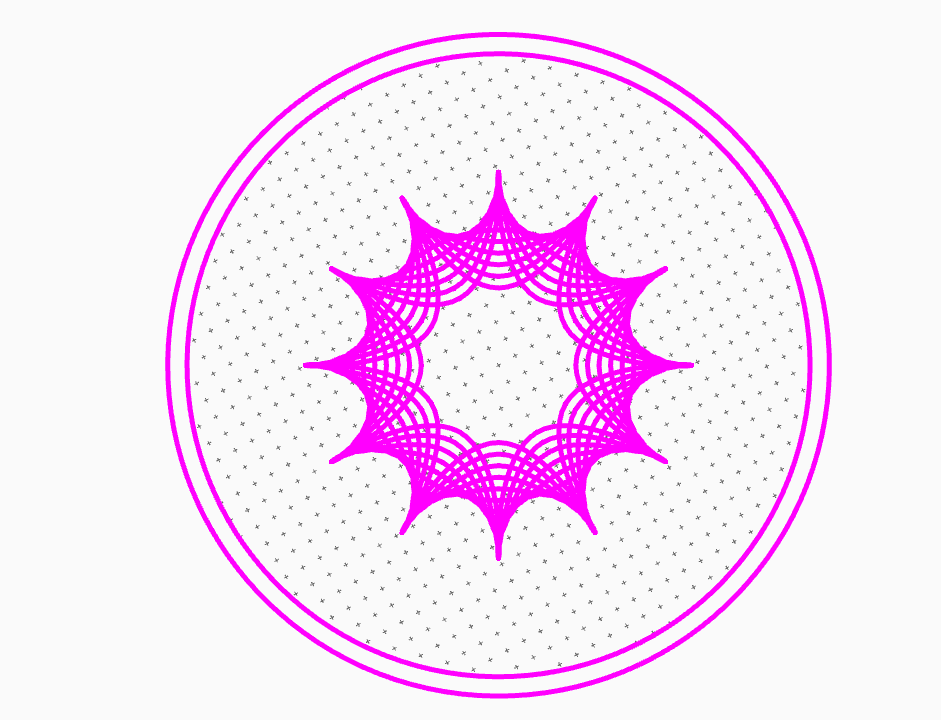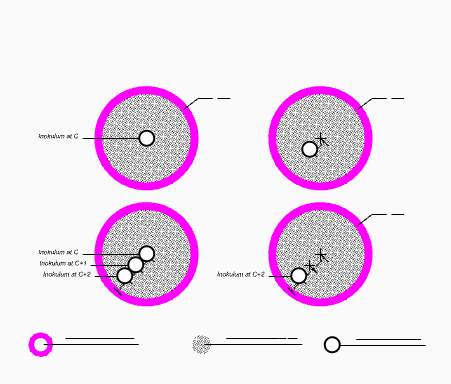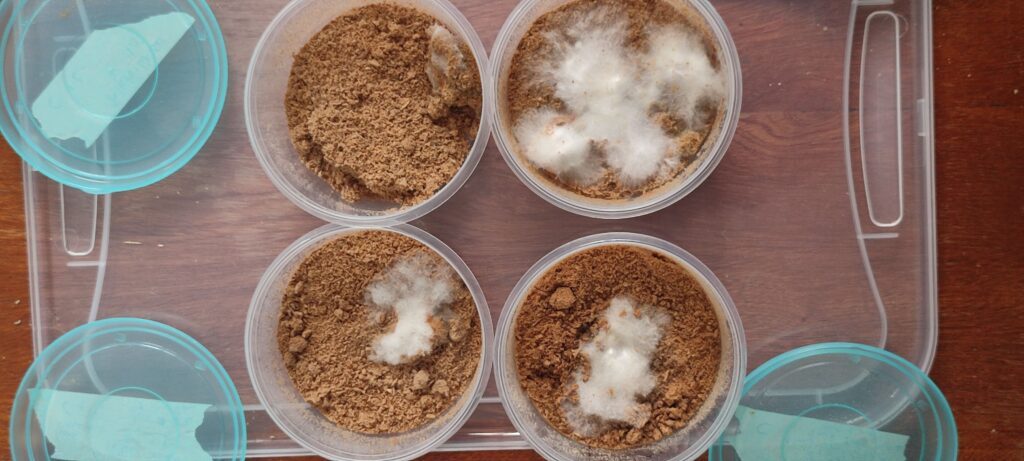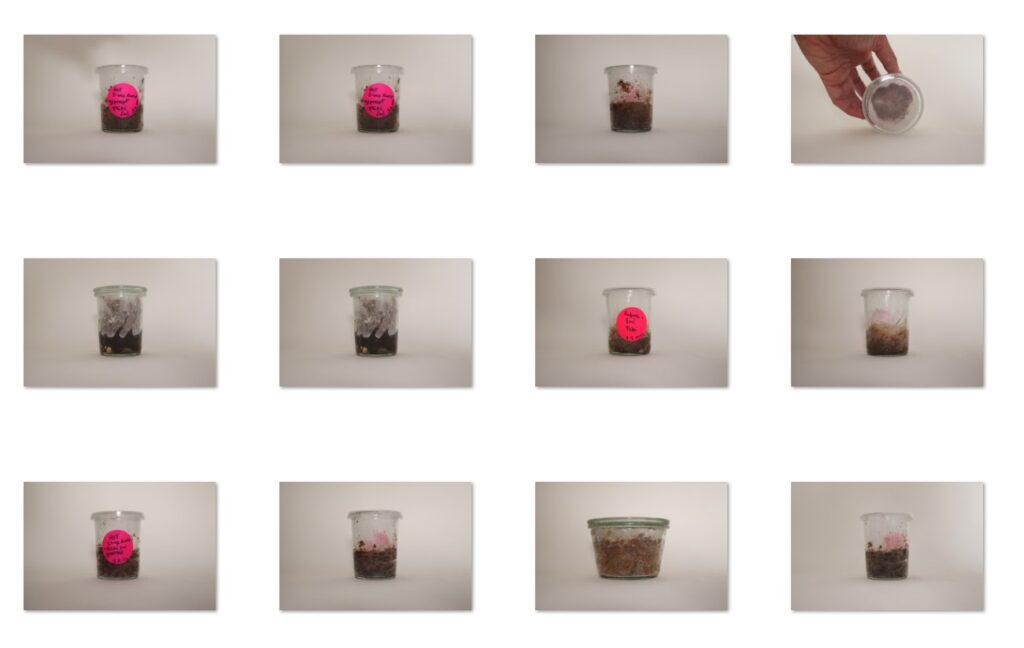Mycelium is the vegetative root of fungi; the third realm besides plants and animals. During its life span, it grows from a miniscule inocula (e.g. a spore, hyphea, spawn substrate) to a dense and large mycelium network which can span several square miles, and can live for thousands of years. These mycelium networks consist of a large amount of fibres (hyphea) that branch out and interconnect to build a logistic infrastructure to transport nutrients and water, as well as binding together the surrounding substrate.
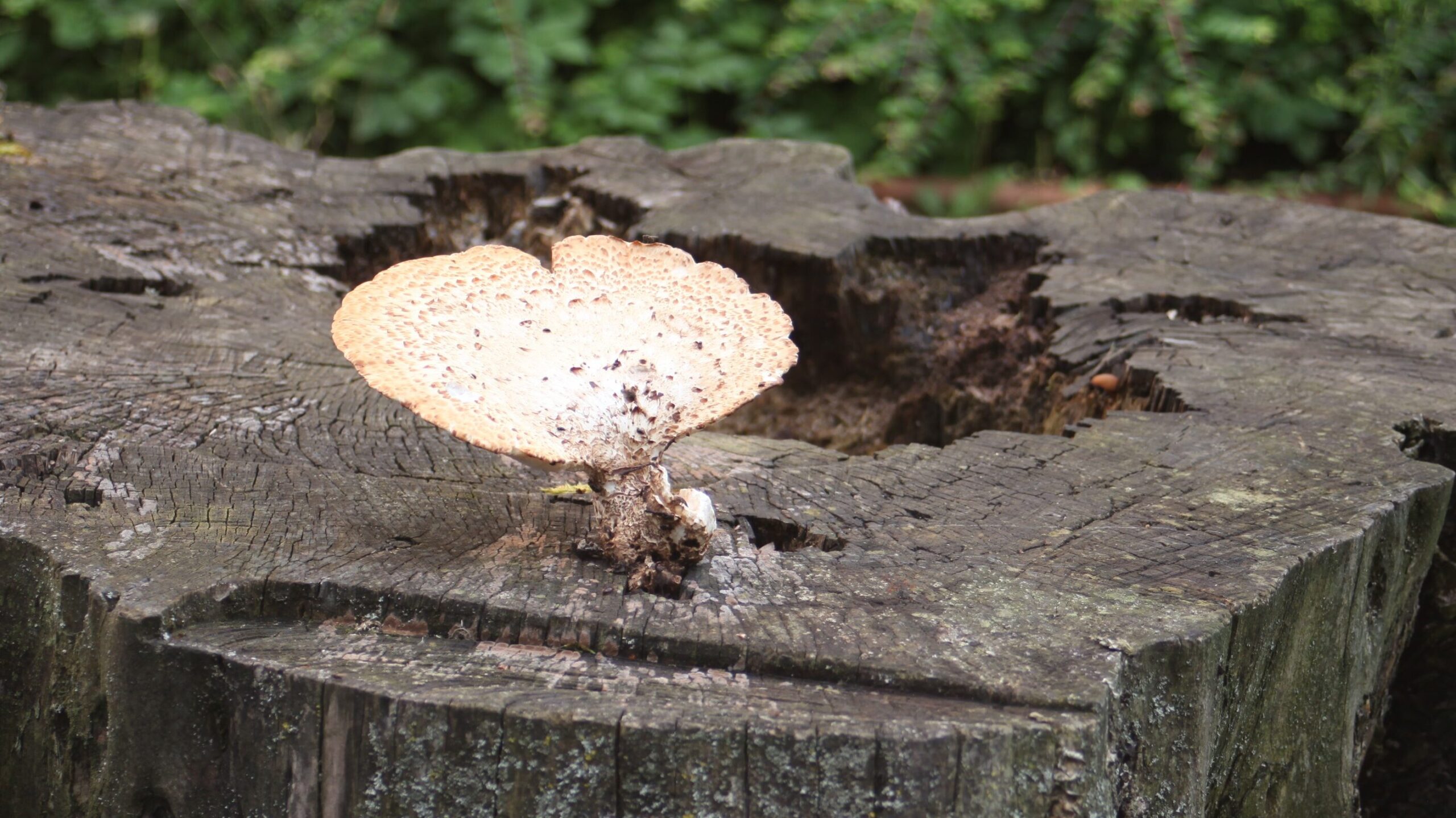
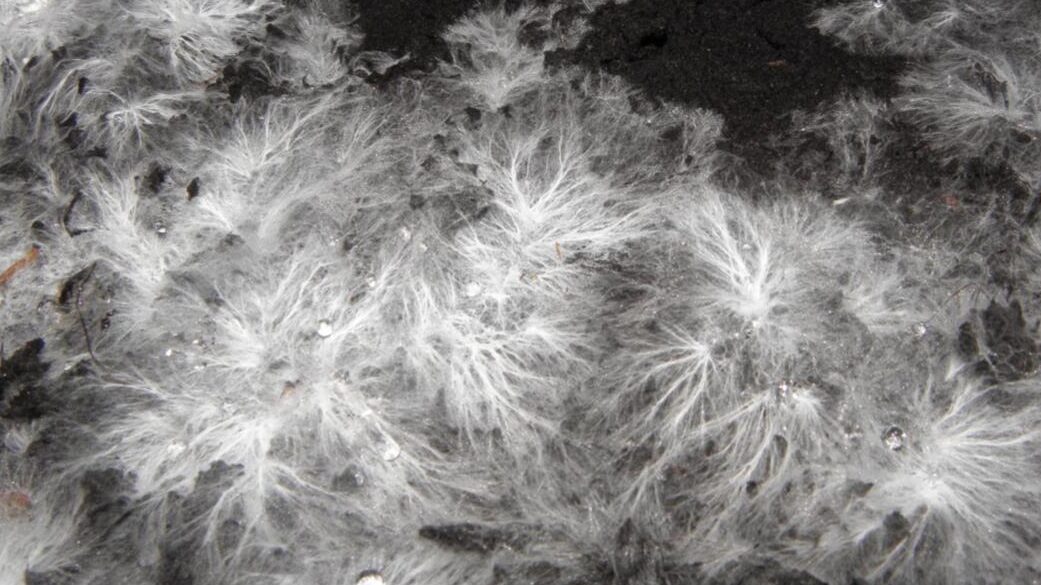
When cultivated in laboratory conditions, mycelium networks are able to create environmentally friendly stable composite biomaterials which can be used for packaging or building material. Such mycelium composite products belong to a new generation of lab-generated biomaterials – so-called ELMs (Engineered Living Materials) – which provide „hyperfunctionalities“ such as thermal and acoustic insulation, compostability, etc.
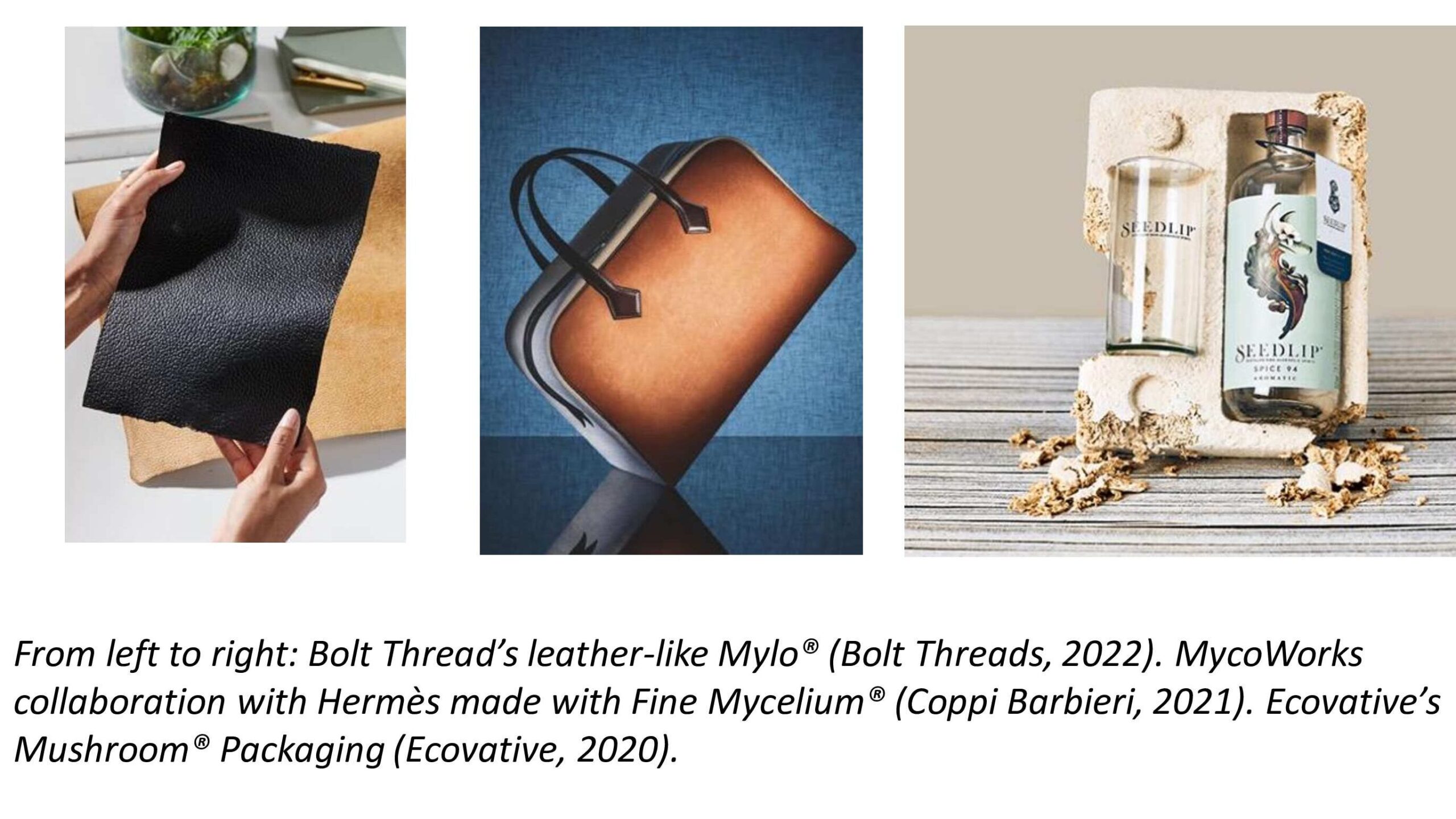
In my PhD research @Bauhaus-University Weimar I critically question the mainstream „biotech“ approach by focussing on digital-enabled and process-based design strategies for Making- With mycelium. It is a cross-disciplinary research that combines knowledge from the fields of computational design, robotics, microbiology and multispecies philosophy through an experimental material design approach to engage with mycelial organisms.
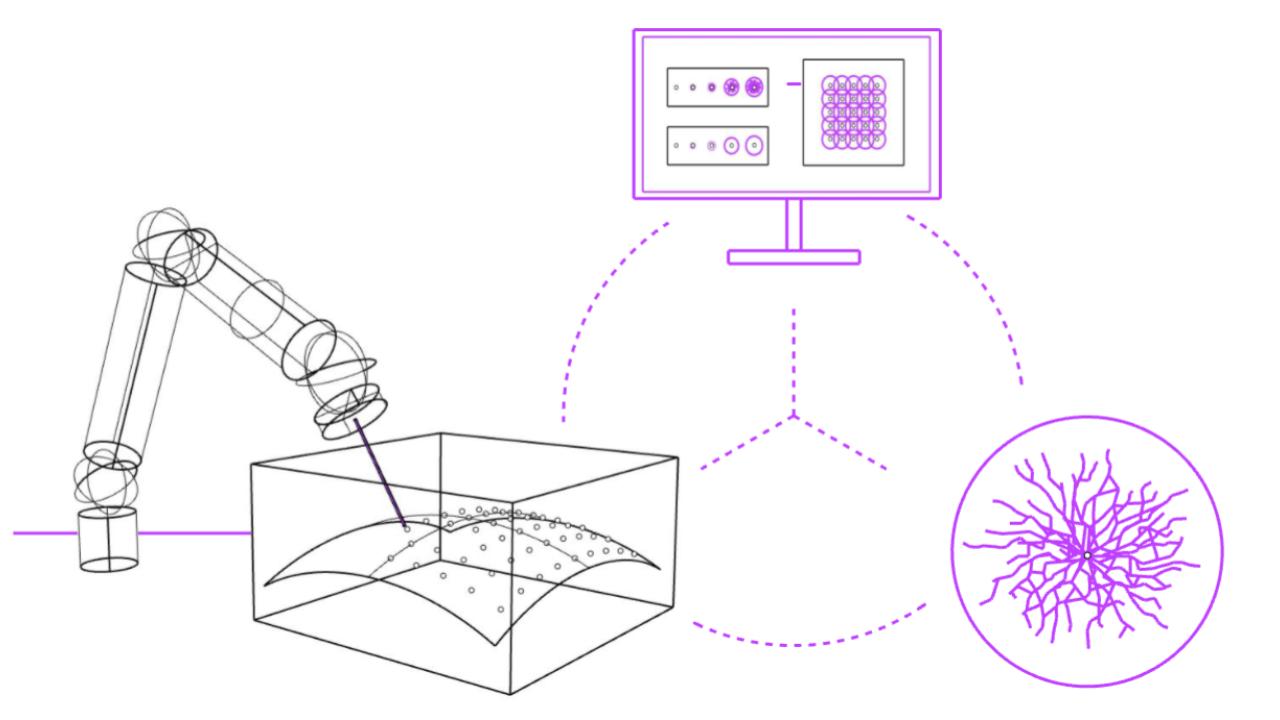
FUNGAL LACING – a case study on fungal-human co-creation in material design
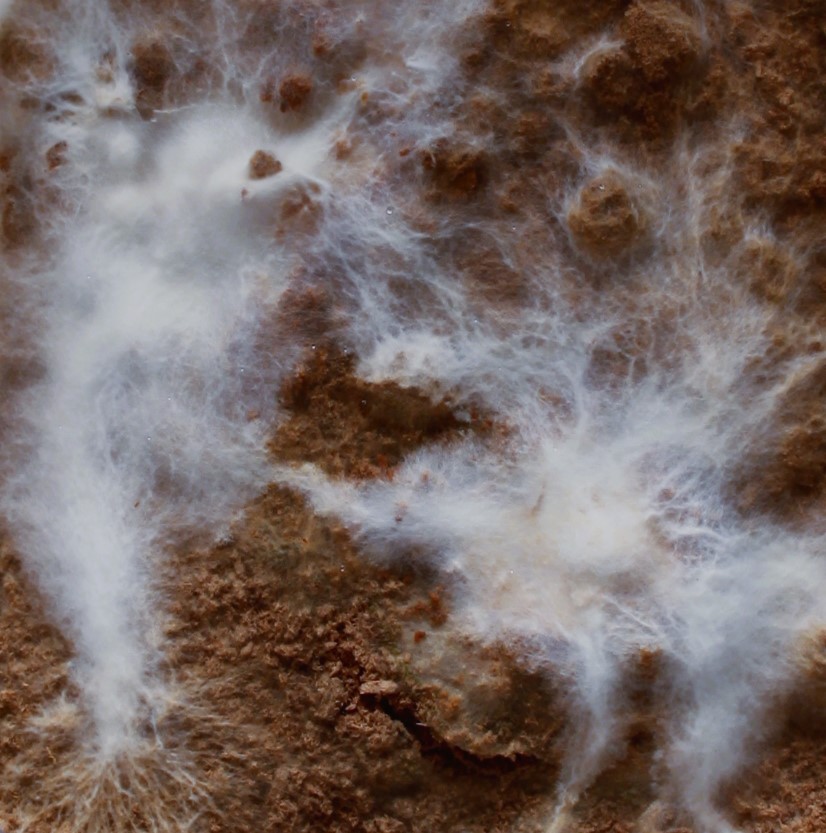
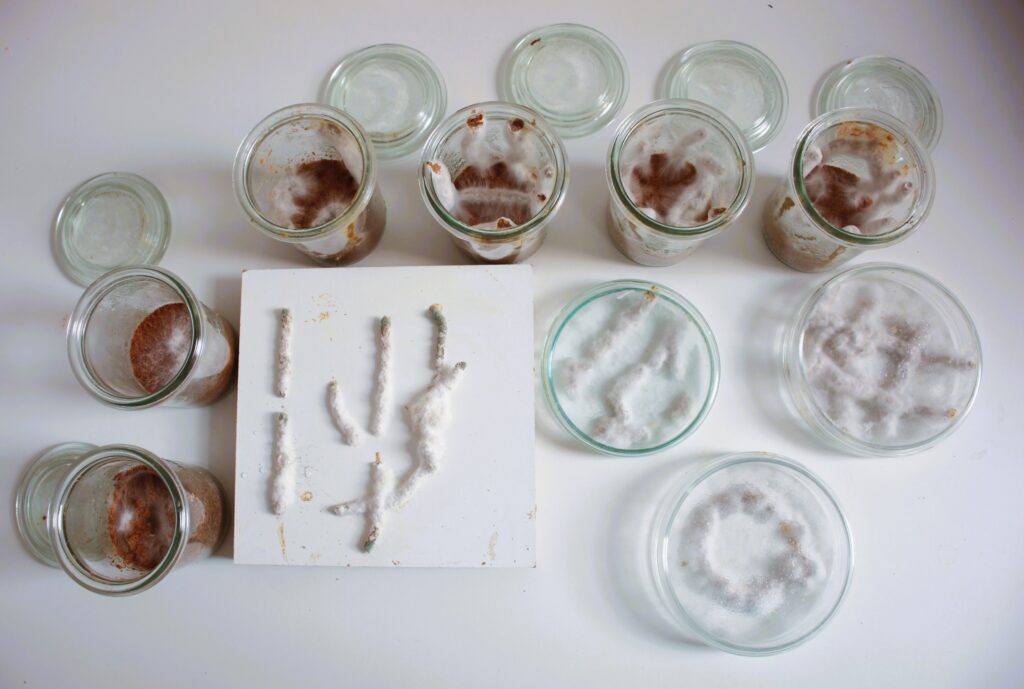
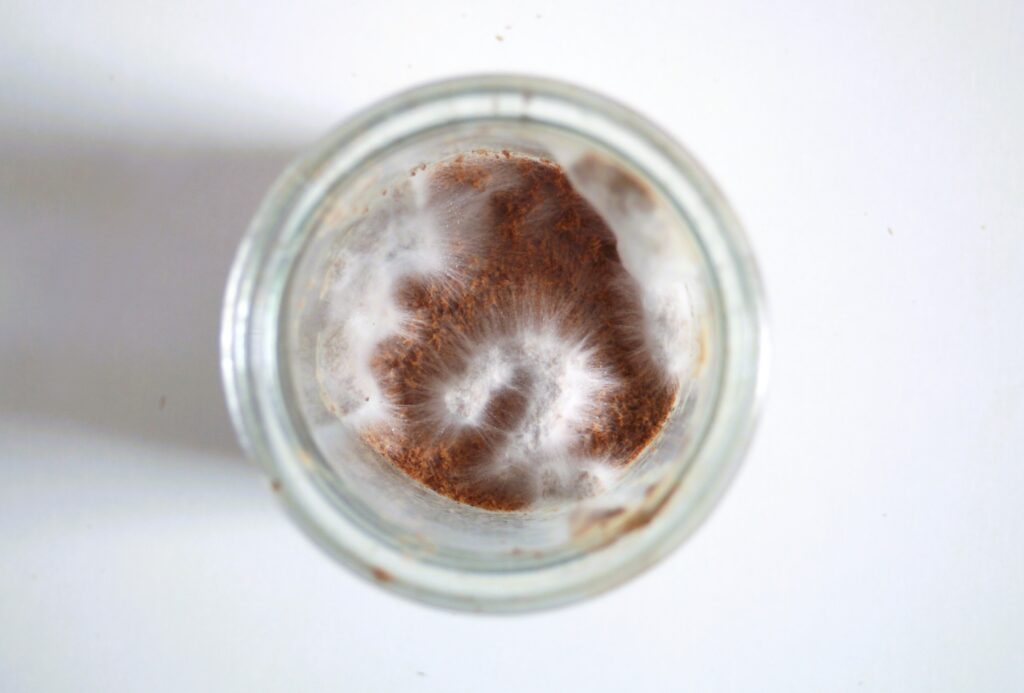
Inspired by the traditional craft of textile lacing – where a fabric is created by stitching single threads into complex geometrical patterns – a series of geometric grids and complex patterns are produced through the strategic, precise placement of a mycelium spawn ink through robotic extrusion on a planar/textured surface. Mycelium grows out of the extruded paths and into a hybrid textile by overgrowing the extrusion pathways. Due to the adaptive growth patterns of mycelium, each initial extrusion pattern leads to a different uncontrollable and irregular mycelial reaction, which in turn creates a unique material quality, much like that found in lacing.
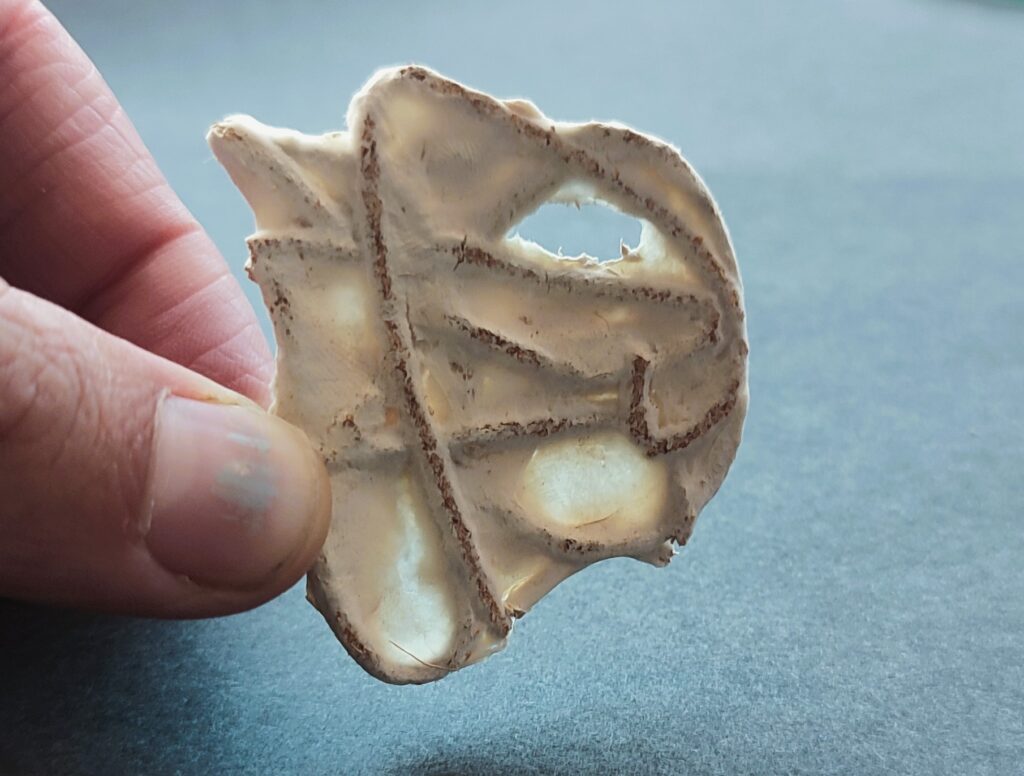
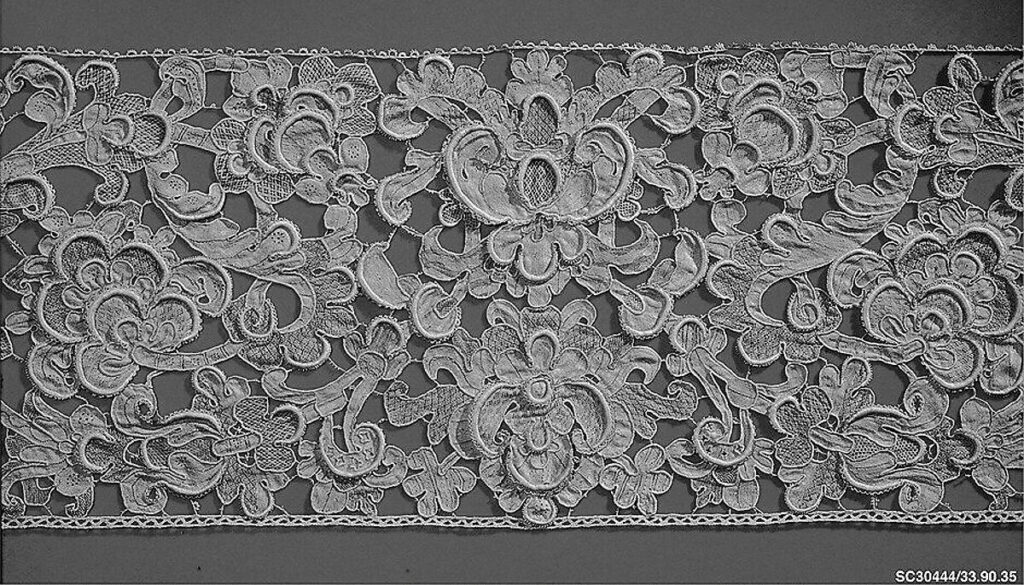
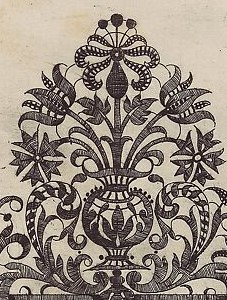
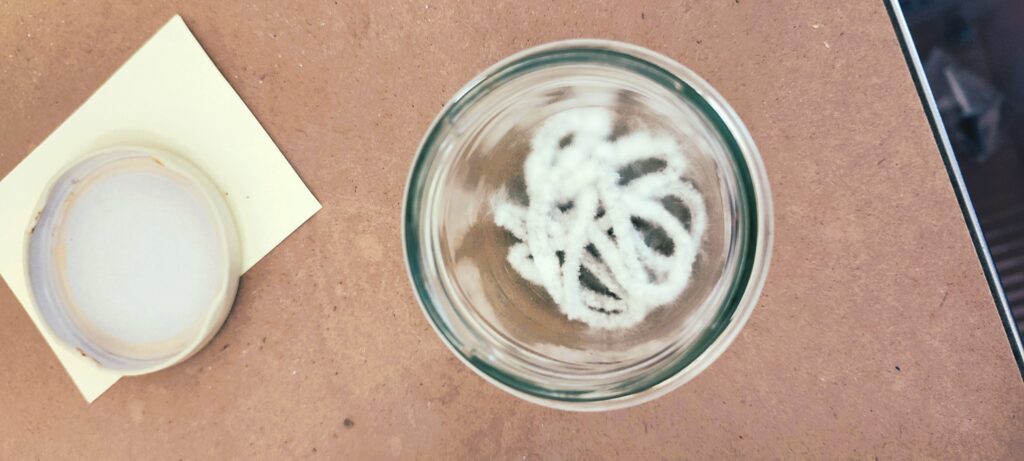
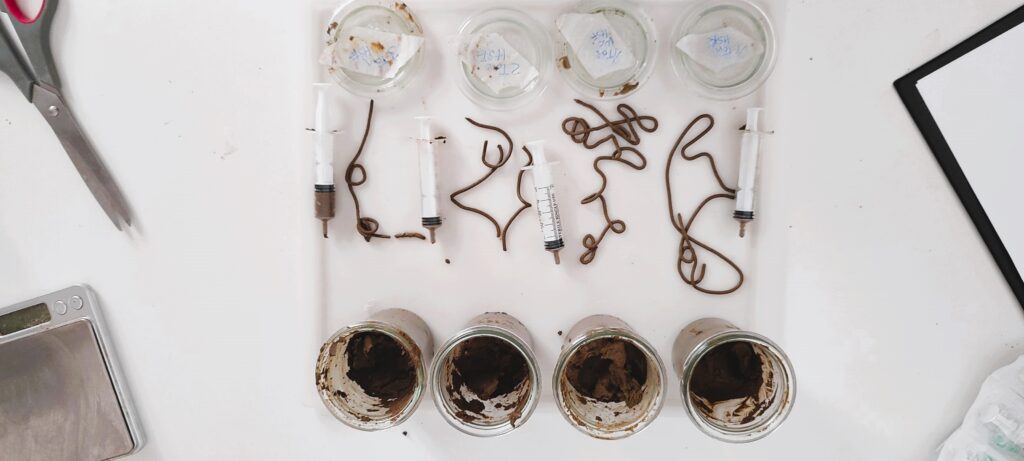
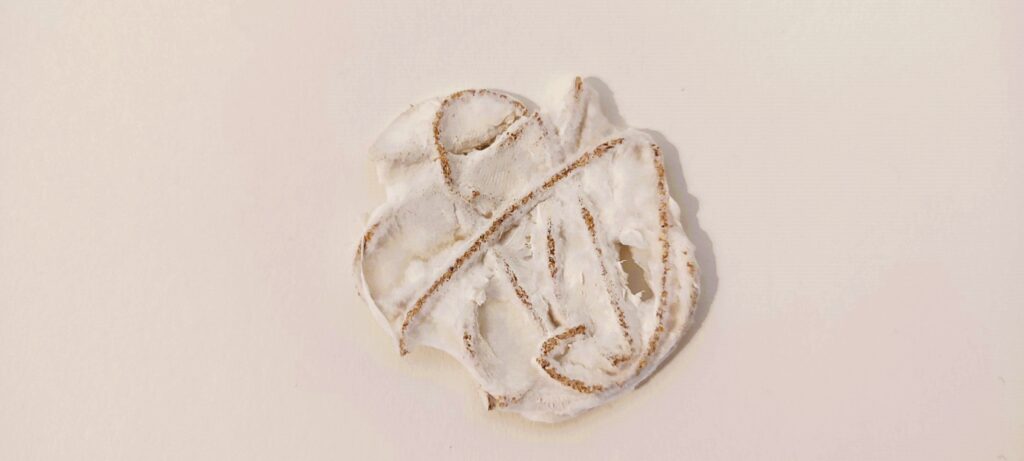
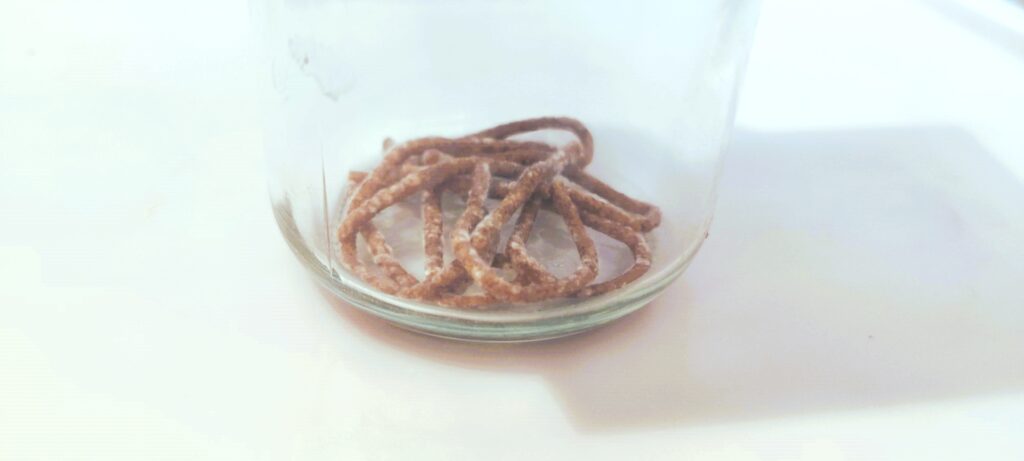
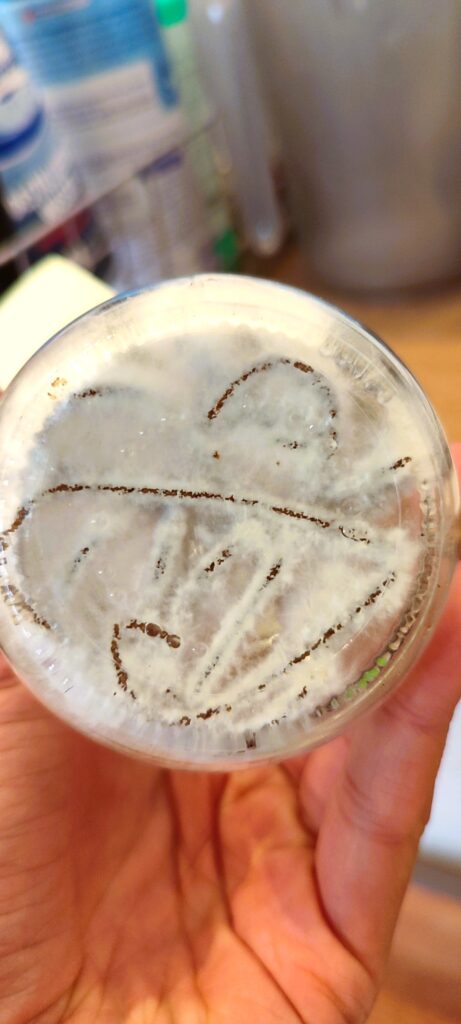
Early stage experiments & results
